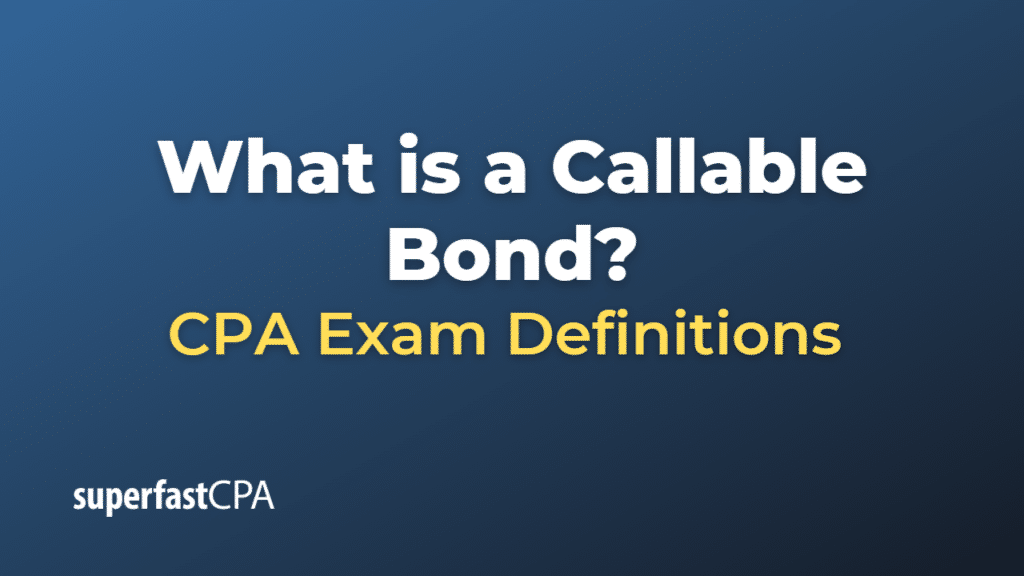Callable Bond
A callable bond is a type of bond that allows the issuer (the company or organization that issues the bond) to redeem or “call” the bond before its maturity date. This means the issuer has the right, but not the obligation, to buy back the bond from investors at a predetermined call price, which is usually set at a premium above the face value (par value) of the bond.
Callable bonds typically include a call provision, which outlines the terms and conditions under which the issuer can call the bond, such as the call date(s), call price, and any call protection period.
Issuers may choose to call a bond when interest rates fall or their credit quality improves, enabling them to refinance their debt at a lower interest rate. By doing so, they can reduce their interest expenses and potentially improve their financial position.
For investors, callable bonds introduce reinvestment risk, as they may have to reinvest the proceeds from the called bonds at lower yields if interest rates have declined since they originally invested. Additionally, the potential for early redemption can make the price behavior of callable bonds more complex, as their prices may not rise as much as non-callable bonds when interest rates decline, due to the increased likelihood of being called.
When investing in callable bonds, it’s crucial for investors to understand the call provisions and weigh the potential risks and rewards associated with early redemption. Callable bonds may offer higher coupon rates compared to non-callable bonds with similar credit quality and maturity to compensate investors for the additional risks associated with the call feature.
Example of a Callable Bond
Suppose a company called “GlobalTech Industries” issues a 10-year callable bond with a face value of $1,000 and an annual coupon rate of 6%. The bond has a call provision that allows GlobalTech Industries to call the bond after four years, starting on the first call date, at a call price of 104% of the face value.
As an investor, you purchase the bond and receive annual interest payments of $60 (6% of $1,000) for holding the bond.
Four years after the bond’s issuance, interest rates in the market have fallen significantly, and GlobalTech Industries is now able to issue new bonds at a lower interest rate of 4%. To take advantage of the lower interest rates and reduce its interest expenses, GlobalTech Industries decides to exercise the call provision and redeem the outstanding callable bonds.
As per the call provision, GlobalTech Industries pays you the call price of $1,040 (104% of $1,000) to redeem the bond before its maturity date. Now, as an investor, you face reinvestment risk because you have to find a new investment for the proceeds from the called bond, and the current market interest rates are lower than when you initially invested in the GlobalTech Industries bond.
In this example, the callable bond allowed GlobalTech Industries to retire its outstanding debt early and refinance at a lower interest rate, while the bondholders faced the risk of reinvesting the proceeds at lower yields due to the early redemption. This scenario demonstrates the key features and potential risks associated with investing in callable bonds.













